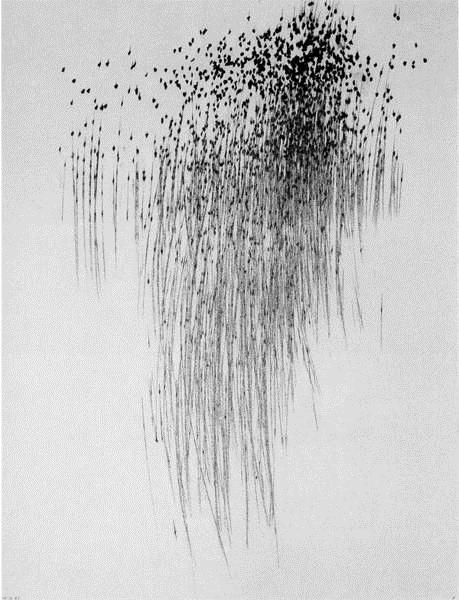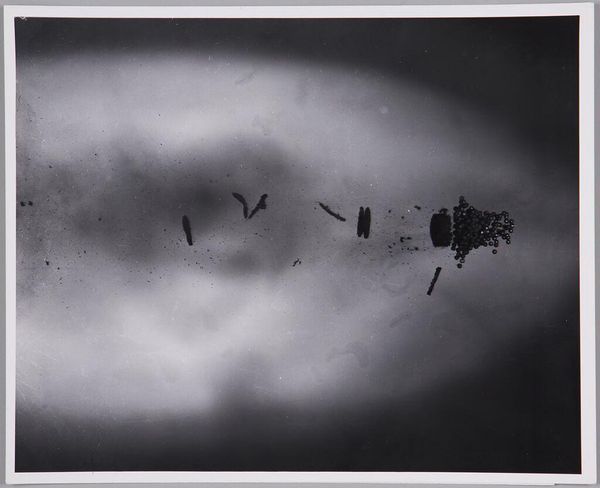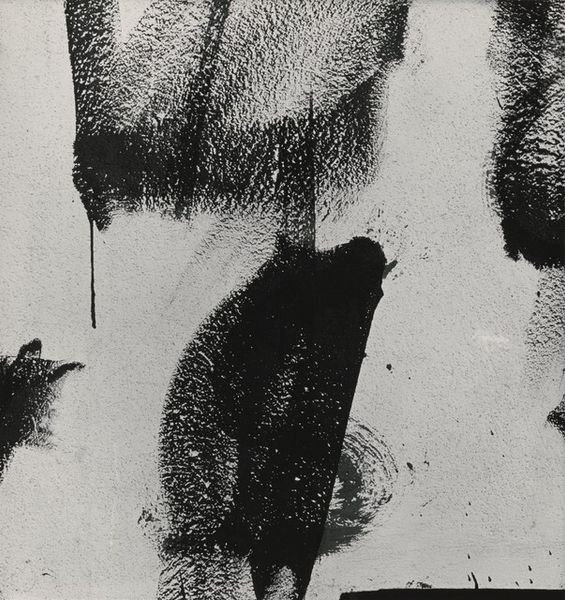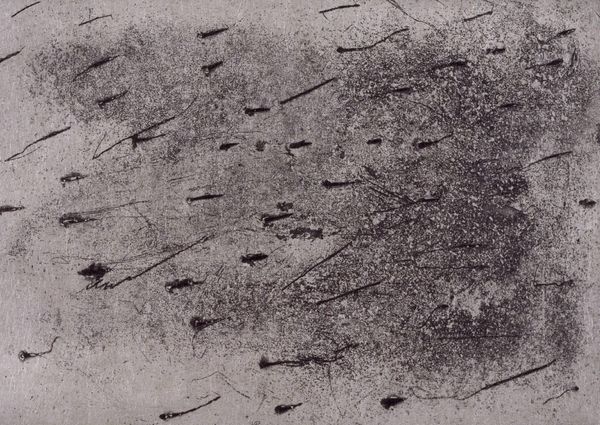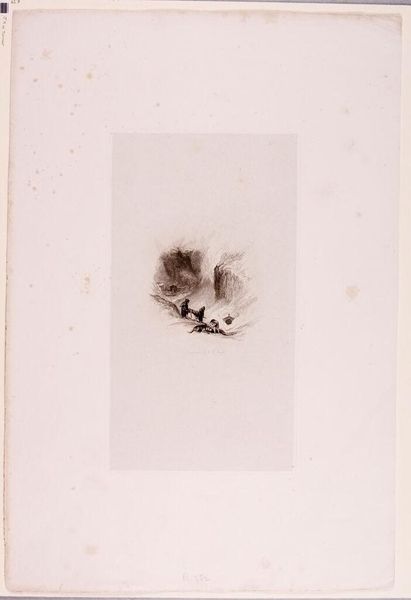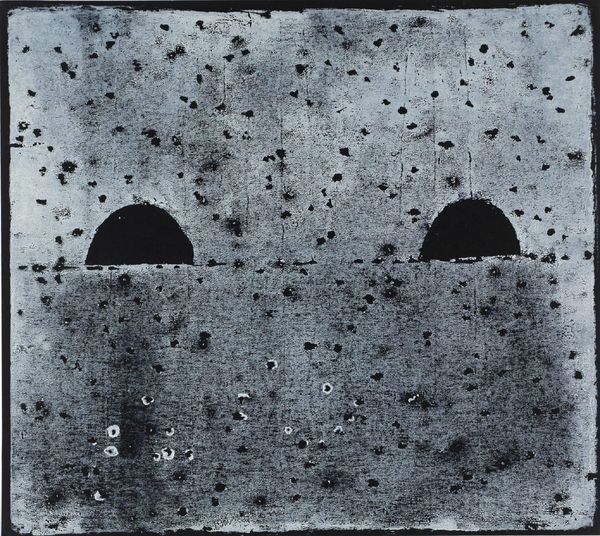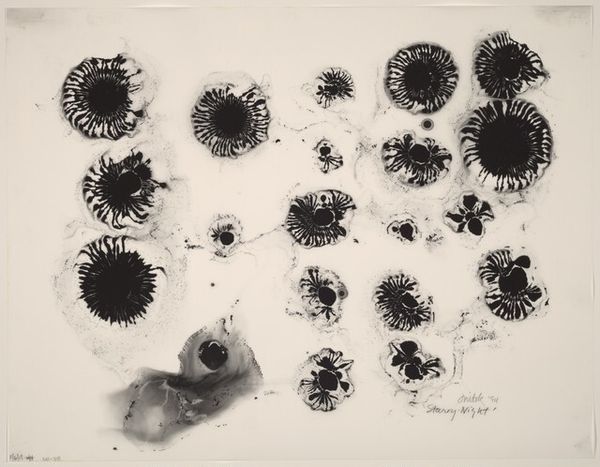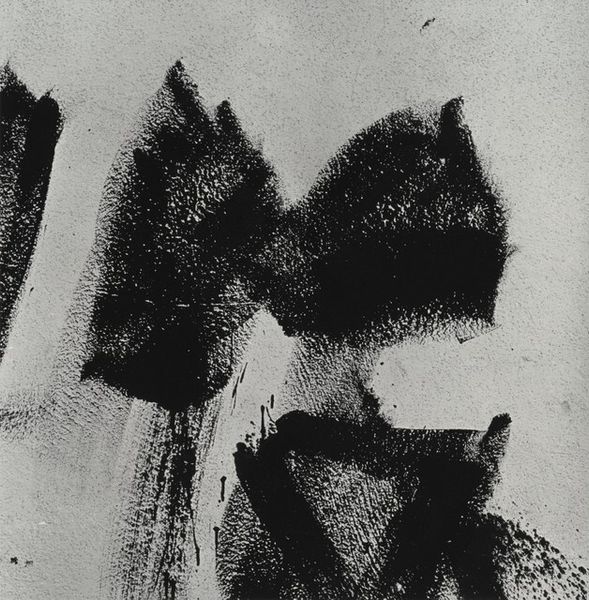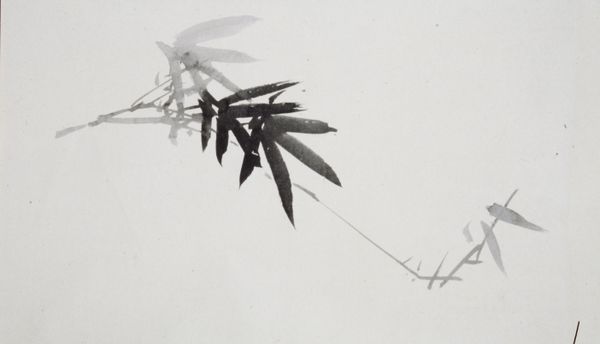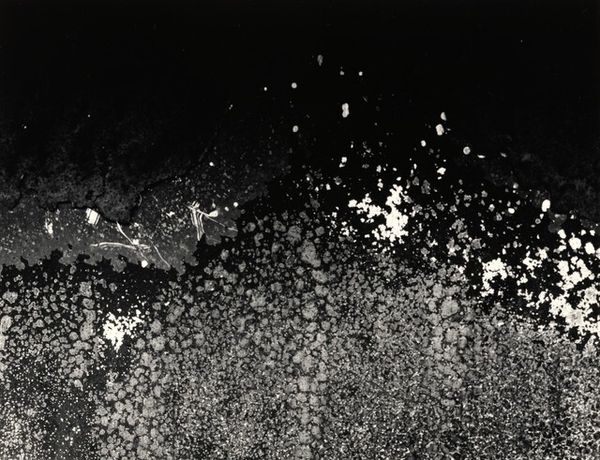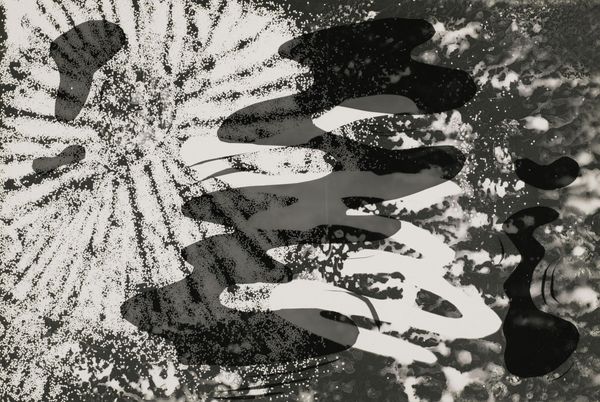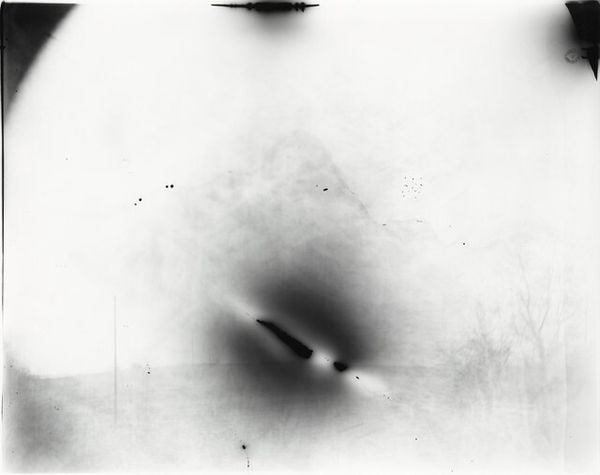
photography
#
natural shape and form
#
natural formation
#
rough brush stroke
#
snowscape
#
nieve
#
photography
#
abstract symbol
#
abstract nature shot
#
free hand
#
water
#
line
#
murky
#
natural form
#
monochrome
Copyright: Oskar Holweck,Fair Use
Editor: Standing here, I’m looking at Oskar Holweck’s "28 II 58" from 1958, a monochromatic photograph. There’s something stark about its composition of three dark, almost exploding, forms against a bright field. It reminds me of Rorschach blots or perhaps some kind of natural phenomenon, captured mid-eruption. How do you interpret this work? Curator: This photograph, while abstract, speaks volumes about the social and cultural climate of its time. The 1950s were marked by both technological advancement and Cold War anxiety. Consider the imagery of atomic explosions, which permeated the collective consciousness. Could these "explosions" be Holweck’s subtle commentary on that era, reflecting unspoken fears? The monochrome aesthetic further enhances this sense of tension. What kind of institutions might have shown work like this, and why? Editor: Maybe galleries interested in abstract expressionism? Or institutions that aimed to explore the darker undercurrents of society, those that focused on visual art as a form of cultural expression and social commentary? Curator: Precisely. These institutions provided a platform for artists to engage with complex issues. The stark contrast and the repetition of form creates a rhythm, almost a warning. We must always consider how political realities shape what artists choose to express. Editor: So, this photograph is not just an abstract composition; it’s a historical document, reflecting the anxieties of the Atomic Age through symbolic representation. I wouldn't have initially looked at it that way, but knowing its historical context gives it an entirely different, much deeper meaning. Curator: Indeed. By examining art through its historical and socio-political lens, we uncover hidden layers of meaning. Understanding the time in which it was created illuminates the motivations and expressions of the artist.
Comments
No comments
Be the first to comment and join the conversation on the ultimate creative platform.
